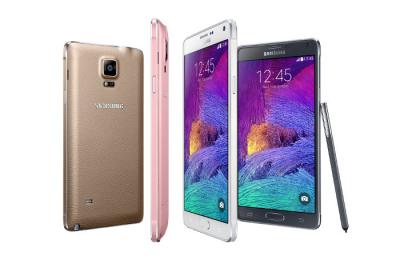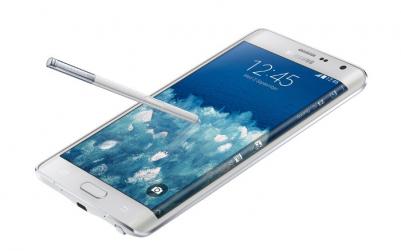Samsung's newest phones, the Galaxy Note 4 and Note 4 Edge haven't been released yet, but my friend Raymond Soneira already got his hands on two pre-release production devices and posted the first review of these new AMOLED smartphones.

So first of all, the regular Note 4 displays. Ray's conclusion? This is the best mobile display ever tested at DisplayMate, surpassing the AMOLED used in the GS5 and the GN3, and also the one used in the Galaxy Tab S. The GN4 display improves on previous generations in the display density (PPI), color accurate, peak brightness (750 cd/m2) and screen readability in high ambient light and the display power efficiency.
As a reminder, the GN4 has a 5.7" QHD (2560x1440, 518 PPI) Super AMOLED display. This is a Diamond Pixel display, like all recent Samsung AMOLED panels. Regarding the resolution, Raymond explains that even though FHD on a smartphone looks perfectly sharp, there are some significant advantages in going higher than the visual acuity for 20/20 Vision at typical viewing distances. For example it enables the display to show a FHD image with 1.6 million pixels left over to display additional content, and it offers an option for efficient and simple rescaling of HD and Quad formats.
Raymond also says that if you stare at an image on the screen, and then move it closer and shake it, you can building an integrated visual map of the image in your brain - and on a higher-density images this allows you to make our more fine image details. I don't understand this completely but I trust Raymond that he knows what he's talking about.
Regarding the efficiency, according to DisplayMate's testing, the GN4 display consumes 14% less power compared to the GN3 - even though the higher resolution which requires a higher processing overhead. Unfortunately, we don't know how it compares to the GS5 in terms of efficiency.

The Note 4 Edge is the Note 4 variant that uses a flexible OLED panel curved on the right side. The "main" display is a 5.6" QHD (2560x1440, 540 PPI), and the right-stripe adds 160 rows that display icons or notifications. As I assumed, DisplayMate confirms that while the display is built on a plastic substrate, it is covered with a Gorilla Glass 3 cover glass.
Raymond actually likes the bent stripe display: he said that it provides an important new UI enhancement - which is quite functional and useful - and even fun. The performance of the display itself is essentially the same as the glass-based GN4 - which is great news for flexible OLED technology.
Comments
You wrote, "Regarding the efficiency, according to DisplayMate's testing, the GN4 display consumes 14% less power compared to the GN4 - even though the higher resolution which requires a higher processing overhead." The 2nd time you wrote GN4, did you mean to write GN3?
Yes, you're right of course - that was a typo. Thanks!


I'm not surprised to see these OLED screens improve with the Note, but it's truly remarkable how smoothly and impressively the improvements are generation-over-generation.
I'm most impressed with the power efficiencies of these new displays. With a whopping 40% efficiency lead for mixed content over LCD, this is augmenting the growing longevity of mobiles thanks to the ~10% improvement in battery energy density each year. I wouldn't be surprised to see smartwatches with always on displays before long, that rely on mostly black screen with very thin graphics (eg. thin font for time).
I'm looking forward to using this display in a VR context. The high resolution and the outstanding contrast should equate to a very nice image.